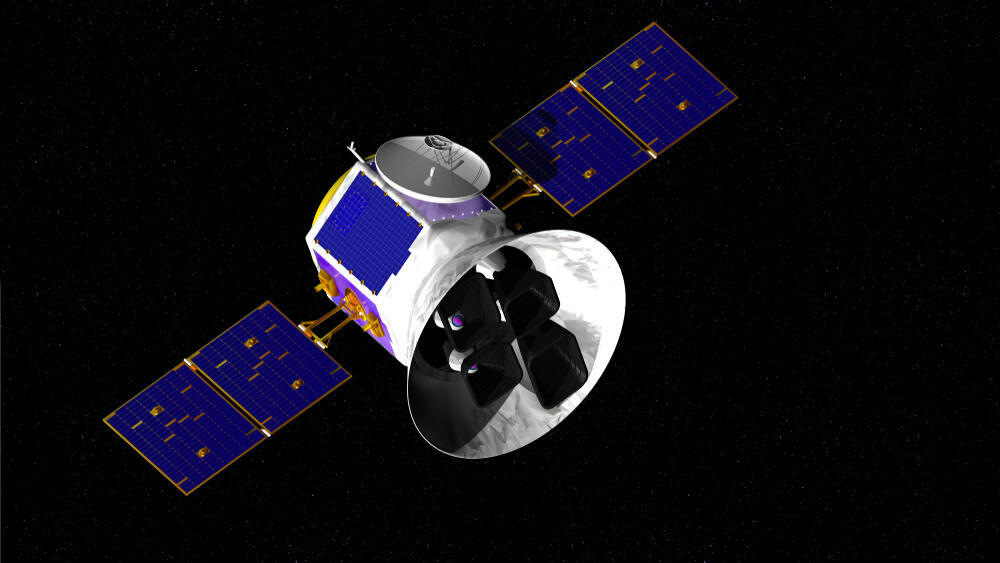Getting your Trinity Audio player ready...
Astronomers have discovered a rocky exoplanet roughly 140 light-years from Earth that is rapidly disintegrating and trailing an enormous stream of debris — making it one of a kind. The planet, named BD+05 4868 Ab, is shedding mass at a dramatic pace and could offer rare insights into planetary diversity and the potential for life beyond our solar system.
Identified by chance using NASA's TESS space telescope, the planet has a mass comparable to Mercury’s but orbits its host star at a distance 20 times closer than Mercury’s orbit around the Sun — completing one full orbit every 30.5 hours. At that extreme proximity, scientists believe the planet’s surface is covered in magma, releasing vast amounts of minerals into space.
2 View gallery


Simulation of BD+05 4868 Ab
(Illustrration: Jose-Luis Olivares, Massachusetts Institute of Technology)
Researchers from MIT’s Kavli Institute for Astrophysics and Space Research detected the planet during routine observations. “It’s surrounded by a massive tail stretching up to 9 million kilometers (5.6 million miles) — about half of its orbital path,” said Dr. Mark Hohn. The findings were published in Astrophysical Journal Letters.
According to the team, BD+05 4868 Ab is losing mass equivalent to Mount Everest every time it orbits its star. At this rate and given its small mass, the planet is expected to disintegrate entirely within 1–2 million years.
“We were lucky to catch this planet in its final moments,” said Dr. Avi Shporer, also from MIT. “We weren’t even looking for a planet like this,” added Dr. Hohn. “It was a routine scan that happened to show an unusual signal.”
<< Get the Ynetnews app on your smartphone: Google Play: https://bit.ly/4eJ37pE | Apple App Store: https://bit.ly/3ZL7iNv >>
The planet’s temperature is estimated at around 1,600°C (2,912°F), causing surface minerals to vaporize. As they cool in space, they form a long, dusty tail — the same tail researchers observed.
The planet’s dramatic demise is linked to its low mass, which lies between Mercury’s and the Moon’s. Heavier terrestrial planets like Earth can retain their atmospheres thanks to stronger gravity. “This is a relatively small body with very weak gravity,” said Shporer. “It loses mass easily, which weakens its gravity further and accelerates the loss.”
Of the nearly 6,000 exoplanets discovered to date, only three others have been observed in a state of disintegration — and all were detected over a decade ago via NASA’s Kepler Space Telescope. Like BD+05 4868 Ab, each showed a similar comet-like tail but none as long.
“This planet has the longest tail ever observed among disintegrating exoplanets,” said Hohn. “That suggests its evaporation is far more catastrophic and it’ll vanish much sooner than the others.”
Its host star, BD+05 4868 A, is relatively close and brighter than the stars around the other disintegrating planets, making it an ideal target for NASA’s James Webb Space Telescope. JWST could help analyze the chemical makeup of the dust trail, offering a direct glimpse into the planet’s interior.
“This is a rare opportunity to study the inner composition of a rocky planet,” said Hohn. “It could teach us a lot about the diversity of exoplanets and their potential to support life.” Added Shporer, “Sometimes, discovery sparks curiosity. Now we’re actively looking for more planets like this, even if it won’t be easy.”


